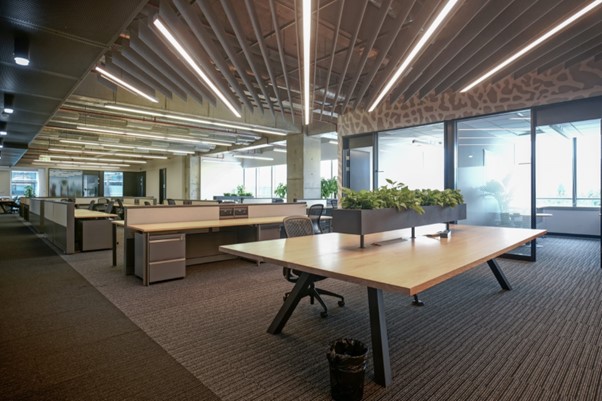


Lighting is more than just a tool for visibility; it has the power to transform spaces, influence moods, and enhance productivity.
One of the most crucial aspects of lighting design, particularly in professional settings, is Colour temperature. Whether it's a corporate office, a retail space, or an industrial facility, selecting the right Colour temperature can have a profound impact on how the space functions and feels.
In this blog, we’ll explore what Colour temperature is, why it matters, and how to choose the right temperature for different professional settings.
Colour temperature refers to the hue of the light produced by a light source, measured in Kelvin (K). It ranges from warm, yellowish tones to cool, bluish tones. Lower colour temperatures (around 2700K to 3000K) emit warm, soft lighting, while higher temperatures (4000K to 5000K and above) produce cooler, brighter light that resembles daylight.
Choosing the right colour temperature for a professional space is more than just an aesthetic decision—it affects everything from productivity and comfort to how products and environments are perceived.
Colour temperature plays a vital role in influencing human behaviour and mood. In professional environments, the right lighting can significantly improve concentration, reduce fatigue, and even increase employee satisfaction.
Warm Light (Below 3000K): Warm lighting creates a relaxing, cozy atmosphere, making it ideal for break rooms, lounges, or waiting areas where employees or clients need to unwind. However, it’s not suitable for workspaces that require high levels of focus or productivity.
Neutral Light (3000K to 4000K): Neutral or "cool white" light offers a balance between warmth and brightness, making it perfect for general office areas and spaces where workers engage in a mix of tasks. It provides a comfortable work environment without being too harsh or too dim.
Cool Light (4000K to 5000K): Cooler light, which mimics daylight, is ideal for areas that demand high concentration and precision, such as conference rooms, workshops, or medical facilities. This lighting keeps employees alert and reduces eye strain, especially during long working hours.
Choosing the right Colour temperature varies depending on the professional setting:
Offices: For an office environment, a mix of neutral (3000K to 4000K) and cool (4000K to 5000K) lighting is ideal. Neutral lighting in general workspaces can create a comfortable atmosphere, while cooler lighting in meeting rooms or collaborative spaces encourages focus and clarity during presentations or discussions.
Retail: In retail settings, lighting not only illuminates the space but also highlights products. Warmer temperatures can create a welcoming ambiance in areas like clothing stores, while cooler light can be used to highlight product details and give a sense of cleanliness in tech or beauty shops.
Industrial Spaces: Industrial environments often benefit from cool lighting (above 4000K) to ensure maximum visibility and focus. It enhances safety, as workers can see their tasks clearly, reducing errors and accidents.
Healthcare Facilities: Cool lighting (4000K to 5000K) is particularly important in healthcare settings, where accuracy is crucial. Bright, daylight-mimicking lights help medical professionals perform precise tasks while also providing a clean, sterile environment.
In modern lighting solutions, flexibility is key. Many professional spaces now use adjustable lighting systems that allow for the colour temperature to change based on the time of day or the task at hand. This ensures that lighting can be optimized for productivity during working hours, and then shifted to a warmer tone when relaxation is needed.
To conclude, by understanding and utilizing the nuances of light, businesses can create environments that not only look good but also feel right, empowering everyone who steps inside to perform at their best.